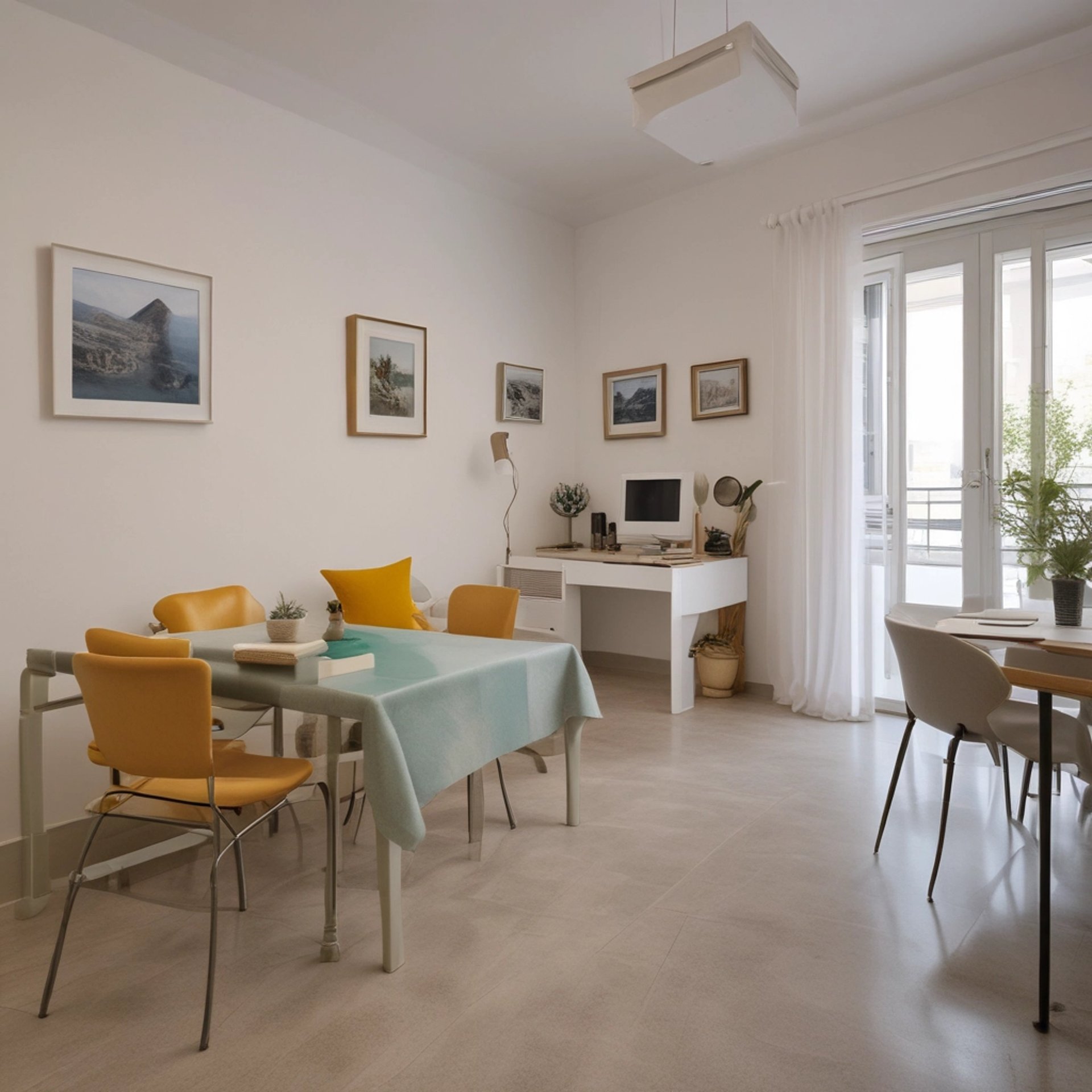Why Floor-to-Ceiling Height Dramatically Increases a Home’s Value
Ceiling height is one of the most underrated factors influencing the value, comfort, and visual quality of an apartment. Discover why higher ceilings create a premium living experience and how they impact long-term property value.
CONSTRUCTION AND NEW HOMES
Christos Boubalos - poli.gr
11/23/2025

1. What Floor-to-Ceiling Height Really Means
Floor-to-ceiling height is the clear vertical distance from the finished floor to the finished ceiling.
In Greece, typical heights have historically been:
2.55–2.65 m in most modern constructions
2.70–2.90 m in older buildings (1970–1990)
3.00+ m in classic, pre-1960 homes
With modern insulation and energy systems, ceiling heights were reduced for efficiency — but in recent years, there has been a strong return to higher ceilings as a premium feature.
And for good reason.
2. High Ceilings Transform How a Home Feels
Ceiling height is one of the few architectural features that cannot be changed later.
And it impacts almost everything:
✔ A sense of luxury
Higher ceilings instantly make a space feel more expensive and sophisticated.
✔ Visual openness
The room feels larger, more breathable, more elegant.
✔ Psychological comfort
Studies show that high ceilings promote relaxation and creativity.
✔ Better sound distribution
Vertical volume creates more pleasant acoustic behavior.
A 25 m² living room with a 2.55 m ceiling feels small.
The same room with a 2.85 m ceiling feels premium.
3. High Ceilings Increase Market Value
Homes with generous ceiling height:
rent faster,
sell at higher prices,
photograph better for listings,
feel significantly larger,
attract buyers who prioritize design and quality.
In many international markets, higher ceilings increase perceived value by:
➡️ +5% to +12%
And because it cannot be altered later, buyers treat it as a long-term architectural advantage.
4. Why Ceiling Height Matters So Much for Natural Light
Height allows for taller balcony doors and larger window surfaces, which means:
more daylight,
fewer dark corners,
deeper light penetration into the room,
visually brighter spaces.
This is especially important in urban areas like Marousi, Halandri, Glyfada, or central Athens, where neighboring buildings can block light.
Higher ceilings → taller windows → vastly superior lighting quality.
5. Thermal Comfort: The Myth and The Truth
Many people assume that higher ceilings mean colder homes.
This is outdated thinking.
With modern construction:
proper insulation,
heat pumps,
airtight windows,
efficient ventilation,
a high-ceiling apartment actually maintains more stable thermal comfort.
Warm air rises above head level, creating a more pleasant temperature zone in everyday living areas.
In summer, the extra vertical volume adds natural cooling benefits.
6. More Height = More Architectural Freedom
With higher ceilings, homeowners gain design flexibility:
✔ Oversized furniture
It no longer makes the room feel cramped.
✔ Decorative lighting
Pendant lights, sculptural fixtures, and designer luminaires look elegant rather than overwhelming.
✔ Vertical storage
Floor-to-ceiling bookcases or art installations become possible.
✔ Minimalist aesthetics
Clean lines and open spaces look significantly more refined when they have room to breathe.
7. What Is Considered Premium Ceiling Height in 2026?
According to modern architectural standards:
2.55–2.65 m → basic/economy
2.70–2.80 m → modern and comfortable
2.80–2.95 m → premium
3.00+ m → high-end luxury
Internationally, luxury developers rarely deliver anything under 2.85 m.
8. Why Ceiling Height Declined — and Why It’s Rising Again
Reasons for previous reductions:
double insulation requirements,
mechanical systems (ducts, AC units),
increased construction cost,
technical constraints in older building permits.
But as the market matures, developers are returning to higher ceilings because:
buyers recognize the value,
spaces feel more premium,
demand for better architecture has increased,
natural light and aesthetics are now top priorities.
The market rewards high ceilings — in both price and desirability.
9. Real Example: The Tymfristou Project by Poli Real Estate
In the Tymfristou development in Marousi, Poli Real Estate incorporated increased floor-to-ceiling heights to enhance:
natural light,
sense of openness,
comfort in everyday living spaces,
premium aesthetic quality,
the overall architectural experience.
Higher ceilings make living rooms feel larger, bedrooms more elegant, and balconies brighter — contributing to the project’s strong demand and boutique character.
10. Conclusion
Ceiling height is one of the most influential factors in:
spatial comfort,
natural light quality,
acoustic behavior,
design flexibility,
perceived size,
long-term property value.
It is an architectural characteristic that directly defines luxury — far more than decoration or furniture ever could.
And because it cannot be changed later, choosing a home with proper ceiling height is a smart, future-proof investment.
Poli Real Estate prioritizes generous ceiling heights across its developments, ensuring premium living conditions and strong long-term value for buyers and investors.
If you would like help evaluating ceiling height, natural light quality, or architectural value in potential properties, our team is ready to assist.
Brokerage
Contact
info@poli.gr
+30-6972-666688
+30-6972-885885
© 2025 Poli Real Estate. All rights reserved.
